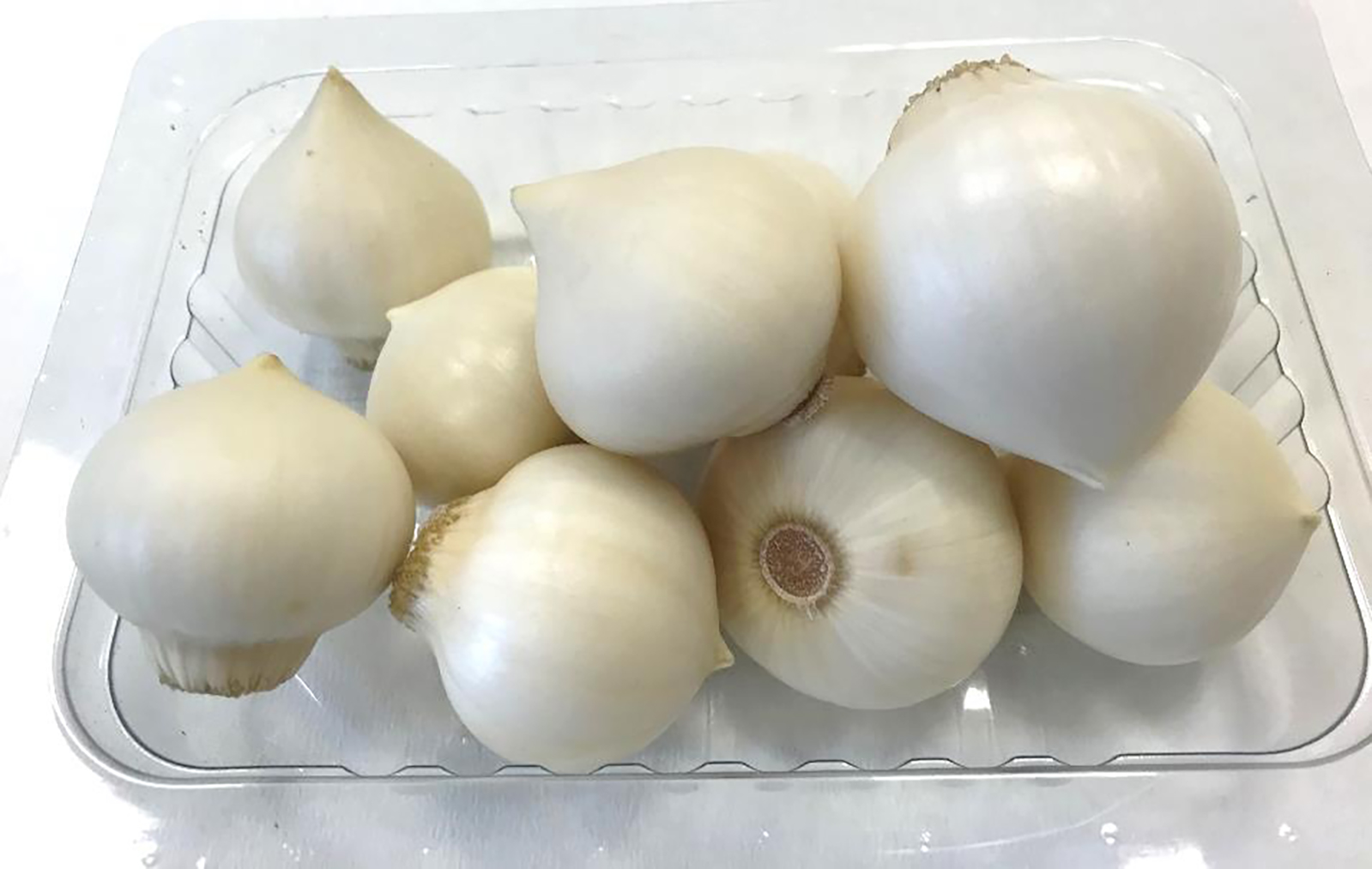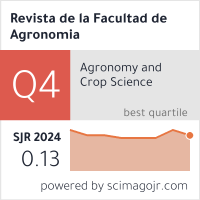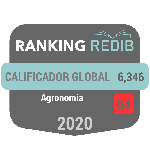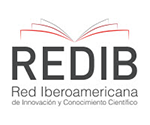Envasado en atmósfera modificada de una especie endémica de ajo, Allium Tuncelianum
Resumen
Allium tuncelianum es un importante ingrediente alimentario endémico ampliamente utilizado en la cocina de Tunceli, Turkey, debido a sus beneficios para la salud y a su sabor y aroma únicos, menos picantes, en comparación con el ajo cultivado. En el presente estudio, se investigaron el envasado en atmósfera modificada (MAP) de Allium tuncelianum y los cambios en su calidad durante 28 días de almacenamiento refrigerado. Este estudio es el único estudio sobre el procesamiento mínimo de Allium tuncelianum. El efecto de la mezcla de gases inicial durante el almacenamiento se investigó utilizando dos mezclas de gases iniciales distintas, A y B: 5 % O2, 5 % CO, 90 %N2, y 3 % O2, 8 % CO2, 89 % N2, respectivamente. Las muestras se analizaron cada siete días con respecto a pérdida de peso, materia seca, actividad de agua, contenido fenólico total, pH, acidez titulable, contenido de cenizas, color, grado de brotación y perfil de textura. El envasado en atmósfera modificada dio como resultado una pérdida de peso de 3,7 a 4,45 g.100 g-1 en comparación con 20,67 g.100 g-1 en el grupo de control almacenado a temperatura y humedad ambiente. No se detectó ningún brote en el grupo de control, mientras que el brote fraccional fue de 0,875 para las muestras de MAP. Por lo tanto, el parámetro clave relacionado con el almacenamiento MAP de Allium tuncelianum parece ser el contenido de humedad de la atmósfera del envasado. MAP con paquetes de adsorbentes de humedad es un método prometedor para mantener la frescura de Allium tuncelianum y proporciona una estrategia de marketing para este ingrediente endémico.
Descargas
Citas
Bansal, V., Siddiqui, M.W., & Rahman, M.S. (2015). Minimally Processed Foods: Overview. In: Siddiqui, M., Rahman, M. (eds) Minimally Processed Foods. Food Engineering Series. Springer, Cham. https://doi.org/10.1007/978-3-319-10677-9_1
Benitez, V., Esteban, R. M., Moniz, E., Casado, N., Aguilera, Y., & Mollá, E. (2018). Breads fortified with wholegrain cereals and seeds as source of antioxidantdietary fibre and other bioactive compounds. Journal of Cereal Science, 82, 113-120. https://doi.org/10.1016/j.jcs.2018.06.001
Cantwell, M.I., Hong, G., Kang, J., & Nie, X. (2003). Controlled atmospheres retard sprout growth affect compositional changes and maintain visual quality attributes of garlic. Acta Horticulturae, 600, 791-794. https://doi: 10.17660/ActaHortic.2003.600.122
Chaix, E., Couvert, O., Guillaume, C., Gontard, N., & Guillard, V. (2015). Predictive microbiology coupled with gas (O2/CO2) transfer in food/packaging systems: how to develop an efficient decision support tool for food packaging dimensioning. Comprehensive Reviews in Food Science and Food Safety, 14(1), 1-21. https://doi.org/10.1111/1541-4337.12117
Chen, J., Hu, Y., Yan, R., Hu, H., Chen, Y., & Zhang, N. (2019). Modeling the dynamic changes in O2 and CO2 concentrations in MAP packaged fresh-cut garlic scape. Food Packaging and Shelf Life, 22, 100432. https://doi.org/10.1016/j.fpsl.2019.100432
Çam, O., & Çelik, C. (2024). Sarımsak: Gastronomi ve Sağlık Açısından Değerlendirmeler. Akra Kültür Sanat Ve Edebiyat Dergisi, 12(32), 135-150. https://doi.org/10.31126/akrajournal.1191485
Davies, A.R., (1999). Advances in Modified-Atmosphere Packaging. In G.W. Gould (Ed.). Aspen Publishers, Gaithersburg, U.S.A. pp. 304-320.
Dronachari, M., Venkatachalapathy, K., & Rajashekarappa, K. S. (2010). Effect of pretreatments and packaging on shelf-life of peeled garlic cloves. Journal of Dairying, Foods and Home Sciences, 29(2), 130-135. Print ISSN: 0971-4456 https://arccarticles.s3.amazonaws.com/webArticle/articles/jdfhs292011.pdf
EL-Mesery, H. S., Sarpong, F., Xu, W., & Elabd, M. A. (2022). Design of low-energy consumption hybrid dryer: A case study of garlic (Allium sativum) drying process. Case Studies in Thermal Engineering, 33, 101929. https://doi.org/10.1016/j.csite.2022.101929
El-Saadony, M. T., Saad, A. M., Korma, S. A., Salem, H. M., El-Mageed, A., Taia, A., & Ibrahim, S. A. (2024). Garlic bioactive substances and their therapeutic applications for improving human health: A comprehensive review. Frontiers in immunology, 15, 1277074. https://doi.org/10.3389/fimmu.2024.1277074
Ezeorba, T. P. C., Ezugwu, A. L., Chukwuma, I. F., Anaduaka, E. G., & Udenigwe, C. C. (2024). Health-promoting properties of bioactive proteins and peptides of garlic (Allium sativum). Food Chemistry, 435, 137632. https://doi.org/10.1016/j.foodchem.2023.137632
González-Buesa, J., Ferrer-Mairal, A., Oria, R., & Salvador, M. L. (2009). A mathematical model for packaging with microperforated films of fresh-cut fruits and vegetables. Journal of Food Engineering, 95, 158–165. https:// doi:10.1016/j.jfoodeng.2009.04.025
Guo, Z., Liu, H., Chen, X., Huang, L., Fan, J., Zhou, J., & Chang, X. (2019). Modified-atmosphere packaging maintains the quality of postharvest whole lettuce (Lactuca sativa L. Grand Rapid) by mediating the dynamic equilibrium of the electron transport chain and protecting mitochondrial structure and function. Postharvest Biology and Technology, 147, 206-213. https://doi.org/10.1016/j.postharvbio.2018.09.001
He, Y., Fan, G. J., Wu, C. E., Kou, X., Li, T. T., Tian, F., & Gong, H. (2019). Influence of packaging materials on postharvest physiology and texture of garlic cloves during refrigeration storage. Food Chemistry, 298, 125019. https://doi.org/10.1016/j.foodchem.2019.125019
Hirschegger, P., Jakše, J., Trontelj, P., & Bohanec, B. (2010). Origins of Allium ampeloprasum horticultural groups and a molecular phylogeny of the section Allium (Allium: Alliaceae). Molecular Phylogenetics and Evolution, 54, 488-497. https://doi: 10.1016/j.ympev.2009.08.030
Ishangulyyev, R., Kim, S., & Lee, S. H. (2019). Understanding food loss and waste why are we losing and wasting food? Foods, 8 (8), 297. https://doi.org/10.3390/foods8080297
Kang, J, and Lee S., (1999). Modified atmospherepackaging of peeled garlic cloves. Food Science and Biotechnology, 8 (1), 68-71. https://www.researchgate.net/publication/272482197_Modified_atmosphere_packaging_of_peeled_garlic_cloves
Kar, S, and Sutar, P. P. (2023). Shelf life prediction of dried garlic powder under accelerated storage conditions. Journal of Food Science and Technology, 60 (3), 996-1005. https://doi.org/10.1007/s13197-022-05431-2
Kargwal, R., Garg, M. K., Singh, V. K., Garg, R., & Kumar, N. (2020). Principles of modified atmosphere packaging for shelf life extension of fruits and vegetables: An overview of storage conditions. International Journal Chemical Studies, 8 (3), 2245-2252. https://doi.org/10.22271/chemi.2020.v8.i3af.9545
Li, X., Li, L., Wang, X., & Zhang, L. (2010). Notice of Retraction: Improved keeping quality of fresh-cut garlic sprouts by atmosphere packaging conditions. In 2010 The 2nd Conference on Environmental Science and Information Application Technology (Vol. 3, pp. 317-320). IEEE. 10.1109/ESIAT.2010.5568327. https://ieeexplore.ieee.org/document/5568327
Liu, H., Xu, L., Yu, F., Tan, J., Cao, L., Xing, Y., & Che, Z. (2021). Effects of different ozone treatments on the storage quality and stability of fresh peeled garlic. RSC Advances, 11 (37), 22530-22543. https://doi.org/10.1039/D1RA00433F
Martins, N., Petropoulos, S., & Ferreira, I. C. (2016). Chemical composition and bioactive compounds of garlic (Allium sativum L.) as affected by pre-and post-harvest conditions: A review. Food Chemistry, 211, 41-50. https://doi.org/10.1016/j.foodchem.2016.05.029
Meral, N., Şen, F., & Yılmaz, E. (2024). Determination of the Effects of Modified Atmosphere Packaging and 1-Methylcyclopropene Applications on the Storability of ‘Farfia’ Apricot Fruits. Turkish Journal of Agriculture-Food Science and Technology, 12(s1), 2060-2068. https://doi.org/10.24925/turjaf.v12is1.2060-2068.7034
Mondal, A., Banerjee, S., Bose, S., Mazumder, S., Haber, R. A., Farzaei, M. H., & Bishayee, A. (2022). Garlic constituents for cancer prevention and therapy: From phytochemistry to novel formulations. Pharmacological Research, 175, 105837. https://doi.org/10.1016/j.phrs.2021.105837
Nielsen, S. S., (2010). Food Analysis Textbook. 4.th. edition. Springer Verlag. Germany. https://doi 10.1007/978-1-4419-1478-1
Pedisić, S., Zorić, Z., Miljanović, A., Šimić, D., Repajić, M., & Dragović-Uzelac, V. (2018). Retention of bioactive compounds during domestic processing of croatian domestic garlic (Allium sativum L.). Food Technology and Biotechnology 56(4), 590-596 https://doi: 10.17113/ftb.56.04.18.5709
Phillips, C.A. (1996). Review: Modified Atmosphere Packaging and Its Effects on the Microbiological Quality and Safety of Produce. International. Journal Food Science Techology, 31, 463-479. https://doi:10.1046/j.1365-2621.1996.00369.x
Rashvand, M., Matera, A., Altieri, G., Genovese, F., Nikzadfar, M., Feyissa, A. H., & Di Renzo, G. C. (2024). Effect of dielectric barrier discharge cold plasma on the bio-nanocomposite film and its potential to preserve the quality of strawberry under modified atmosphere packaging. Food and Bioprocess Technology, 17(5), 1247-1264. https://doi.org/10.1007/s11947-023-03196-w
Sajid, M., Butt, M. S., Shehzad, A., & Saira Tanweer, S. T. (2014). Chemical and mineral analysis of garlic: a golden herb. Pakistan Journal of Food Science. 24 (2): 108-110.https://www.researchgate.net/publication/304284739_Chemical_and_mineral_analysis_of_garlic_a_golden_herb
Sandhya, K. V. K. (2010). Modified atmosphere packaging of fresh produce: Current status and future needs. LWT- Food Science and Technology. 43, 381–392.
https://doi.org/10.1016/j.lwt.2009.05.018
Shagun, S., Bains, A., Sridhar, K., Dhull, S. B., Patil, S., Gupta, V. K., & Sharma, M. (2024). A comprehensive review on impact of post-harvest management and treatment practices on the quality of garlic (Allium sativum L) during storage. Scientia Horticulturae, 337, 113586. https://doi.org/10.1016/j.scienta.2024.113586
Sharma, G. P., and Prasad, S. (2001). Drying of garlic (Allium sativum) cloves by microwave–hot air combination. Journal of Food Engineering, 50 (2), 99-105. https://doi.org/10.1016/S0260-8774(00)00200-4
Singh, S., Gaikwad, K. K., & Lee, Y. S. (2019). Development and application of a pyrogallic acid-based oxygen scavenging packaging system for shelf life extension of peeled garlic. Scientia Horticulturae, 256, 108548. https://doi.org/10.1016/j.scienta.2019.108548
Singleton, V.L., Orthofer, R., & Lamuela-Raventos, R.M., (1999). Analysis of total phenols and other oxidation substrates and antioxidants by means of folin-ciocalteu reagent. Methods in Enzymology, 299, 152-178. https://doi.org/10.1016/s0076-6879(99)99017-1
Sivertsvik, M., Jeksrud W.K., & Rosnes, J. T. (2002). A review of modified atmosphere packaging of fish and fishery products – significance of microbial growth, activities and safety. International Journal of Food Science and Technology, 37, 107-127 https://doi.org/10.1046/j1365-2621.2002.00548.x
Takim, K. (2020). Tunceli dağ sarımsağı (Allium tuncelianum) farklı eksraksiyonlarında LC-MS/MS ile fenolik bileşik miktarlarının karşılaştırılması. Harran Tarım Ve Gıda Bilimleri Dergisi, 24(1), 44-52. https://doi.org/10.29050/harranziraat.591171
Thakur, P., Dhiman, A., Kumar, S., & Suhag, R. (2024). Garlic (Allium sativum L.): A review on bio-functionality, allicin's potency and drying methodologies. South African Journal of Botany, 171, 129-146. https://doi.org/10.1016/j.sajb.2024.05.039
Vázquez-Barrios, M. E., Lopez-Echevarría, G., Mercado-Silva, E., Castano-Tostado, E., & Leon-Gonzalez, F. (2006). Study and prediction of quality changes in garlic cv. Perla (Allium sativum L.) stored at different temperatures. Scientia Horticulturae, 108, 127–132. https://doi.org/10.1016/j.scienta.2006.01.013.
Venu Madhav, J., Sethi, S., Kaur, C., & Pal, R. K. (2016). Quality evaluation of modified atmosphere packed minimally processed garlic cloves. Indian Journal of Horticulture, 73, 274–278. https://doi.org/10.5958/0974-0112.2016.00060.8
Wani, A. A., Singh, P., Pant, A., & Langowski, H. C. (2015). Packaging Methods for Minimally Processed Foods. M. W. Siddiqui, M. S. Rahman (Eds.). Springer International Publishing, U. S. A. pp. 35–55. https://doi: 10.1007/978-3-319-10677-9_3
Ward, G. (2016). Modified atmosphere packaging for extending storage life of fresh fruits and vegetables. Reference Module in Food Science. https://doi.org/10.1016/B978-0-08-100596-5.03167-X
Yumrutaş, Ö., Demirörs, S. S., & Doğan, M., (2009). The in vitro antioxidant activity of Allium tuncelianum: An endemic. Journal of Applied Biological Sciences, 3, 3, 61-64. https://dergipark.org.tr/tr/download/article-file/415359

Derechos de autor 2025 Alper Güven, Nida Beğboğa

Esta obra está bajo licencia internacional Creative Commons Reconocimiento-NoComercial-CompartirIgual 4.0.



















